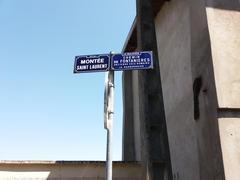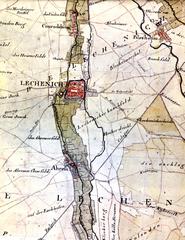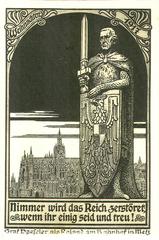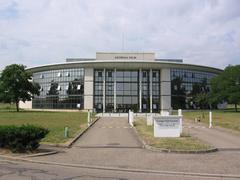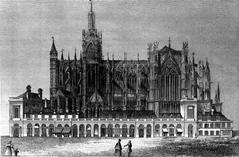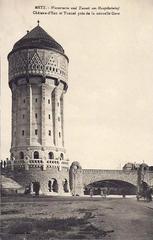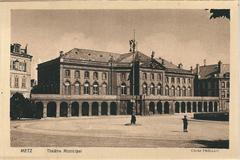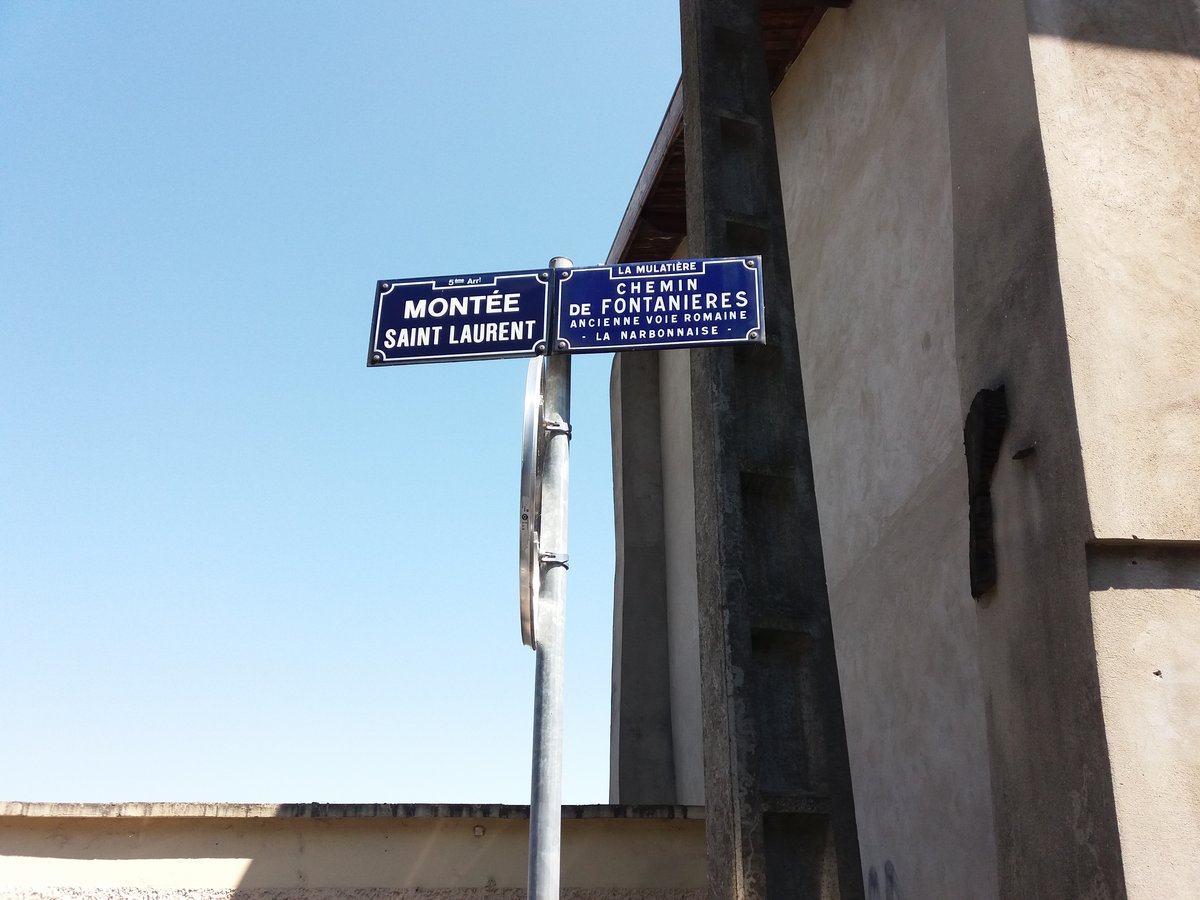
Via Agrippa Metz: Comprehensive Visiting Guide, Tickets, and Historical Sites
Date: 14/06/2025
Introduction
Metz, a vibrant city in the Grand Est region of France, was once a vital junction on the legendary Via Agrippa—the sophisticated Roman road network constructed under Marcus Vipsanius Agrippa during the late 1st century BCE. This extensive infrastructure not only facilitated the movement of Roman legions but also encouraged trade, cultural exchange, and urban development, leaving an enduring mark on Metz’s urban fabric. Today, visitors can explore remnants of this remarkable heritage, from museums housing Roman artifacts to walking routes that trace the ancient path. This guide provides a detailed overview of the Via Agrippa in Metz, including its history, key sites, visiting hours, ticket information, and practical travel tips, ensuring a rewarding experience for history enthusiasts and casual travelers alike (Wikipedia; Time Travel Rome; Metz Metropolitain).
Table of Contents
- Roman Origins and Construction of the Via Agrippa
- Strategic Importance and the Route Through Metz
- Engineering Features and Archaeological Remains
- Urban and Economic Impact
- Medieval and Modern Legacy
- Key Sites and Remnants in Metz
- Visiting Hours, Tickets, and Accessibility
- Visitor Experience: Tours, Itineraries, and Tips
- Local Culture and Events
- Frequently Asked Questions (FAQ)
- Conclusion and Recommendations
- References and Further Reading
Roman Origins and Construction of the Via Agrippa
The Via Agrippa was a transformative infrastructure project initiated by Marcus Vipsanius Agrippa, a trusted general and son-in-law of Emperor Augustus. Serving as the backbone of Roman Gaul, this network radiated from Lugdunum (modern Lyon), with one major northern route passing through Metz (then Divodurum Mediomatricorum) on its way to Trier and Cologne. Constructed using advanced Roman engineering—layered stone, gravel, and cambered surfaces for drainage—the roads were marked by milestones and equipped with relay stations (mutationes) for efficient travel and military logistics. This ambitious project helped integrate Gaul into the Roman Empire both administratively and culturally (Wikipedia; aktivland-saarburg.de).
Strategic Importance and the Route Through Metz
Metz’s position at the confluence of the Moselle and Seille rivers made it a crucial crossroads in the Roman era. The Via Agrippa’s northern branch linked Lyon to Trier and Reims, passing directly through Metz. This strategic location ensured Metz’s prominence as a military, commercial, and administrative hub throughout antiquity. Archaeological and historical evidence suggests that the city’s population peaked at around 40,000 during the Roman era, underscoring its significance (Time Travel Rome).
Engineering Features and Archaeological Remains
Roman engineering prowess is evident in the construction of the Via Agrippa through Metz. The road system was built with multiple layers for durability and effective drainage. Excavations in and around Metz have uncovered sections of Roman roadbed, milestones, and, notably, remnants of a monumental aqueduct that once spanned the Moselle River. While much of the original road is now hidden beneath modern streets, its influence persists in Metz’s urban layout (Time Travel Rome; aktivland-saarburg.de).
Urban and Economic Impact
The Via Agrippa was instrumental in Metz’s Roman-era prosperity. As a vital artery, it facilitated the flow of goods—including wine, grain, and ceramics—between north and south, and encouraged the construction of public buildings such as baths, an amphitheater, and the basilica of Saint-Pierre-aux-Nonnains (originally a gymnasium). The city’s economic vibrancy and cosmopolitan character were direct results of the connectivity and security provided by the Roman roads (Metz Metropolitain; traveling-cook.com).
Medieval and Modern Legacy
Following the fall of the Western Roman Empire, the routes established by the Via Agrippa continued to shape Metz’s urban planning and defense structures. Medieval and modern streets, such as Rue Serpenoise and Rue Taison, are believed to overlay the ancient Roman alignment. Metz’s enduring significance as a regional center owes much to the foundational infrastructure provided by the Via Agrippa (Wikipedia; aktivland-saarburg.de).
Key Sites and Remnants in Metz
Musée de la Cour d’Or
The Musée de la Cour d’Or is the city’s premier venue for Gallo-Roman artifacts, including Roman mosaics, milestones, and remains of ancient baths. The museum contextualizes Metz’s role as a Roman crossroads and is an essential stop for anyone interested in ancient history.
- Visiting Hours: Tuesday to Sunday, 10:00 AM – 6:00 PM; closed Mondays
- Tickets: Adults €7–8; discounts for students and seniors; free for under 18s and EU residents under 26
Basilica of Saint-Pierre-aux-Nonnains
Originally constructed as a Roman gymnasium in the 4th century CE, this site is one of Europe’s oldest churches and stands as a physical testament to Metz’s layered history (Dabbling in Jetlag).
- Visiting Hours: Daily, 9:00 AM – 6:00 PM
- Admission: Free
Rue Serpenoise and Rue Taison
These pedestrian-friendly streets are believed to follow the ancient Via Agrippa route and are perfect for a self-guided walking tour, with interpretive plaques providing historical context (PlanetWare; Travel France Bucket List).
Roman Amphitheater and Aqueduct
Although only fragments remain, the Roman amphitheater and aqueduct are marked points of interest and can be included in guided or self-guided tours (aktivland-saarburg.de).
Visiting Hours, Tickets, and Accessibility
- Via Agrippa Routes: The ancient road routes are publicly accessible at all times, with no entrance fees.
- Musée de la Cour d’Or: Tuesday to Sunday, 10:00 AM–6:00 PM; tickets €7–8 for adults, discounts available.
- Centre Pompidou-Metz: Tuesday to Sunday, 10:00 AM–6:00 PM (late opening Thursdays); tickets €9–14 (Centre Pompidou-Metz).
- Accessibility: Museums and most pedestrian routes are wheelchair accessible; some archaeological sites may have uneven terrain.
- Tourist Information: The main tourist office near the cathedral provides maps, itineraries, and multilingual assistance (Tourisme Metz).
Visitor Experience: Tours, Itineraries, and Tips
Guided and Self-Guided Tours
- Guided Tours: Offered by the Metz Tourist Office and local organizations, often with a focus on Roman heritage and the Via Agrippa. Prices are typically €10–15 per person; booking ahead is recommended, especially during peak seasons.
- Self-Guided Tours: City maps and plaques help visitors trace the ancient road through modern Metz. Downloadable itineraries and virtual tours are available on the official tourism website.
Recommended Itineraries
- 2–3 Hours: Walk the central historic core—Place Saint-Louis, Rue Taison, Rue Serpenoise—ending at the Musée de la Cour d’Or.
- Half to Full Day: Combine the walking tour with the museum, basilica, and riverside promenades.
- Extended Stay: Explore nearby Roman sites in Trier or Reims, accessible by train or car.
Getting Around
- By Train: TGV from Paris (1.5 hours); train station is centrally located (Dabbling in Jetlag).
- By Car or Bike: Rentals available; bike-friendly routes follow the Via Agrippa’s path.
- Public Transport: Efficient bus network connects to outlying sites.
Local Culture and Events
- Festivals: Roman-themed events and European Heritage Days (September) offer special tours and exhibitions (France Voyage).
- Local Cuisine: Sample Quiche Lorraine, Mirabelle plum desserts, and regional charcuterie at the Covered Market (Dabbling in Jetlag).
- Sustainable Tourism: Utilize public transport, support local businesses, and respect heritage site guidelines.
Frequently Asked Questions (FAQ)
Q: Where can I see remnants of the Via Agrippa in Metz?
A: The Musée de la Cour d’Or displays Roman artifacts, and the historic city center overlays the ancient route. Guided tours highlight key locations.
Q: What are the main opening hours and ticket prices?
A: Museums are generally open Tuesday to Sunday, 10:00 AM–6:00 PM; tickets for the Cour d’Or Museum are €7–8; many outdoor sites are free.
Q: Are guided tours available?
A: Yes, through the Metz Tourist Office and independent guides. Advance booking is recommended.
Q: Is the Via Agrippa route accessible for people with disabilities?
A: Most central sites and museums are accessible, but some outdoor paths may have uneven terrain.
Q: When is the best time to visit?
A: Spring and autumn offer pleasant weather and vibrant cultural events.
Conclusion and Recommendations
The Via Agrippa’s legacy is deeply woven into the streets and culture of Metz. Exploring its route—whether through guided tours, museum visits, or self-guided walks—offers an immersive journey through ancient and modern history. Leveraging resources like the Metz Tourist Office, official museum websites, and digital tools such as the Audiala app will enhance your experience with interactive maps and expert commentary. Embrace Metz’s unique blend of Roman heritage and contemporary vibrancy, and let the stones of the Via Agrippa guide your steps into the past.
References and Further Reading
- Wikipedia
- Time Travel Rome
- Metz Metropolitain
- aktivland-saarburg.de
- PlanetWare
- Dabbling in Jetlag
- Tourisme Metz
- Cour d’Or Official Site
- Centre Pompidou-Metz
- France Voyage
- Travel France Bucket List
- Reisen Around
- OK-Time
- OrangeSmile
